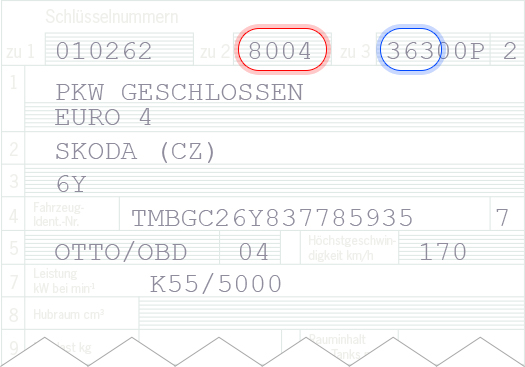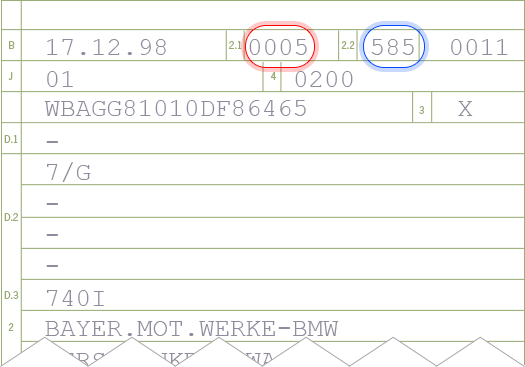
KW 7-post driving dynamics test
The KW test center in Fichtenberg provides motor sport teams and industry partners the ability to simulate suspension travel of the vehicle on actual race tracks. This is done KW\'s hydraulic 7-post driving dynamics test rig. Whether using 4post sweep, 4post track replay or 7post track replay. The KW test center allows motor sport teams the ability to read between 50 to 100 measurements per day depending on the type of racecar. Setting up a KW competition damper systems will prove beneficial as you\'ll be able to maximize the added benefits of the competition damper system.

During the test cycle, the KW chassis can be removed and immediately adapted to the measurement results. During the measurements on the 7-post vehicle dynamics test bench, there is no wear and tear on the vehicles as in real driving operations and, in addition to capital, our customers save time. With its wide range of test options, the test stand is interesting for anyone who wants to get more out of their chassis with Formula 1 testing technology.
Advantages
The 7post driving dynamics test rig owned by KW automotive offers customers the ability to perform an analysis and optimization of the vertical dynamics of their vehicle.
- Repeatability due to consistent external environmental conditions
- Saves time (50-100 measurements per day / depending on vehicle type)
- No wear and tear on the vehicle
- No track rental
- Ability to test vehicles that are not ready to drive
- Continuous documentation of all measurements
- Data analysis with Matlab® and MS Excel®
-
Optimization of different parameters
- Body resonance frequencies
- Degree of damping
- Nodding behavior
- Building movemen
- dynamic vehicle level
- Wheel load fluctuations
- With KW dampers, a change of damper assembly & spring choice is directly possible. The characteristic curve of dampers can be adjusted.
Infrastructure
In addition to the test rig, a workshop area with a 2-post vehicle lift is available. Furthermore, testing possibilities on damper tests from the companies Schenk (crank mechanism), API Dyno (electronic-mechanical) and Röhrig (hydraulic) are available.


Requirements
- Wheelbase: min. 1500 mm/ max. 3450 mm
- Tracks: min. 1100 mm/ max. 1900 mm
- Weight: max. 3,5 t
Checklist
-
Vehicle as in use:
- Chassis bearings
- Tires (possibly optional tires with hot air pressure values)
- Wheel loads (relevant tank content, ballast bags are available)
- Axle geometry
- Vehicle height
- Bring optional springs and dampers
- Bring special tools (e.g. rim lock, central lock, compressed air bottle for lifting system)
- For customer-specific sensors, suitable adapter to LEMO connector type (PHG.1B.304.CLLD62Z)
The analysis methods - 4post sweep
Test procedure
Excitation of the four wheel actuators by means of stroke sinusoidal oscillation with constant maximum speed in the zero crossing of 50, 100, 150, 200 or 250 mm / s and increasing frequency of 1-20 Hz.
Services / analysis
- Optimization of the body resonance frequencies (intended use)
- Optimization of the degree of damping (ratio between spring and damping forces)
- Optimization of the nodding behavior (balance)
- Optimization of the body movement (vehicle control / comfort)
- Optimization of the dynamic vehicle level (compression / rebound ratio)
- Optimization of wheel load fluctuations (traction)
- Optimization of the minimum wheel running force (traction)
- Determination of the dynamic tire stiffness
In addition to this frequency analysis, excitation frequencies and speeds as well as modes according to customer requirements are also possible. Roll stiffness tests can also be carried out. Constant aerodynamic forces can be simulated using two additional air springs.
Equipment
- four wheel acceleration sensors
- two body acceleration sensors
- two or four displacement sensors on the vibration dampers or between the rim and fender
4post track replay
Test procedure
Stimulation of the actuators via a drive file that was created by track iteration from real track data. The analysis is made track-specific, global, and sector-wise.
Services / Analysis
- Data processing and iteration of the track data to create the drive file on the test rig
- Definition of track sectors with problem areas for a differentiated evaluation
- Route-related optimization of the build-up and pitching accelerations
- Track sectoral optimization of wheel load variations
- Optional: Implementation of a 4-post analysis
Additional requirements
- Route data for the vehicle to be measured must be available. Record of:
-
- Vertical acceleration of the four wheels / wheel carriers (sensors can be rented)
Attention: Constant aerodynamic forces can be simulated via two air springs, but no pitching and rolling movements due to longitudinal or lateral acceleration. A 7post track replay must be made for this.

7post track replay
Test procedure
In addition to the operation of the four wheel rams, inertia and output forces are introduced directly into the vehicle construction by three additional actuators. The actuators are stimulated via a drive file that was created using route iteration from real route data and an Aeromap. The analysis is carried out route-specifically, globally and by sector.
Services / Analysis
- Data processing and iteration of the track data to create the drive file on the test rig
- Simulation of aerodynamic loads according to specification or aeromap
- Definition of track sectors with problem areas for a differentiated evaluation at different driving conditions
- Dividing options: braking, cornering, traction and notch sectors, low-, middle- and high-speed sectors and definition of under and over steering
- Route sector-related optimization of build-up and pitching accelerations
- Route sector-related optimization of wheel load fluctuations
- Track sectoral optimization of the dynamic vehicle level
- Optional: Carrying out a 4 post sweep analysis with constant output forces
Additional requirements
- Data for aerodynamic must be present
- Position of the vehicle center of gravity must be known
-
Route data for the vehicle to be measured must be available. Record of:
- Vertical acceleration of the four wheels / wheel carriers (sensors can be rented)
- Vehicle speed
- Longitudinal acceleration
- Lateral acceleration
- Brackets for aero actuators / LVTs
A detailed checklist is available on request.
Contact - Vehicle Dynamics Test
Email: [email protected]
Brochure, checklists and prices available on request.




